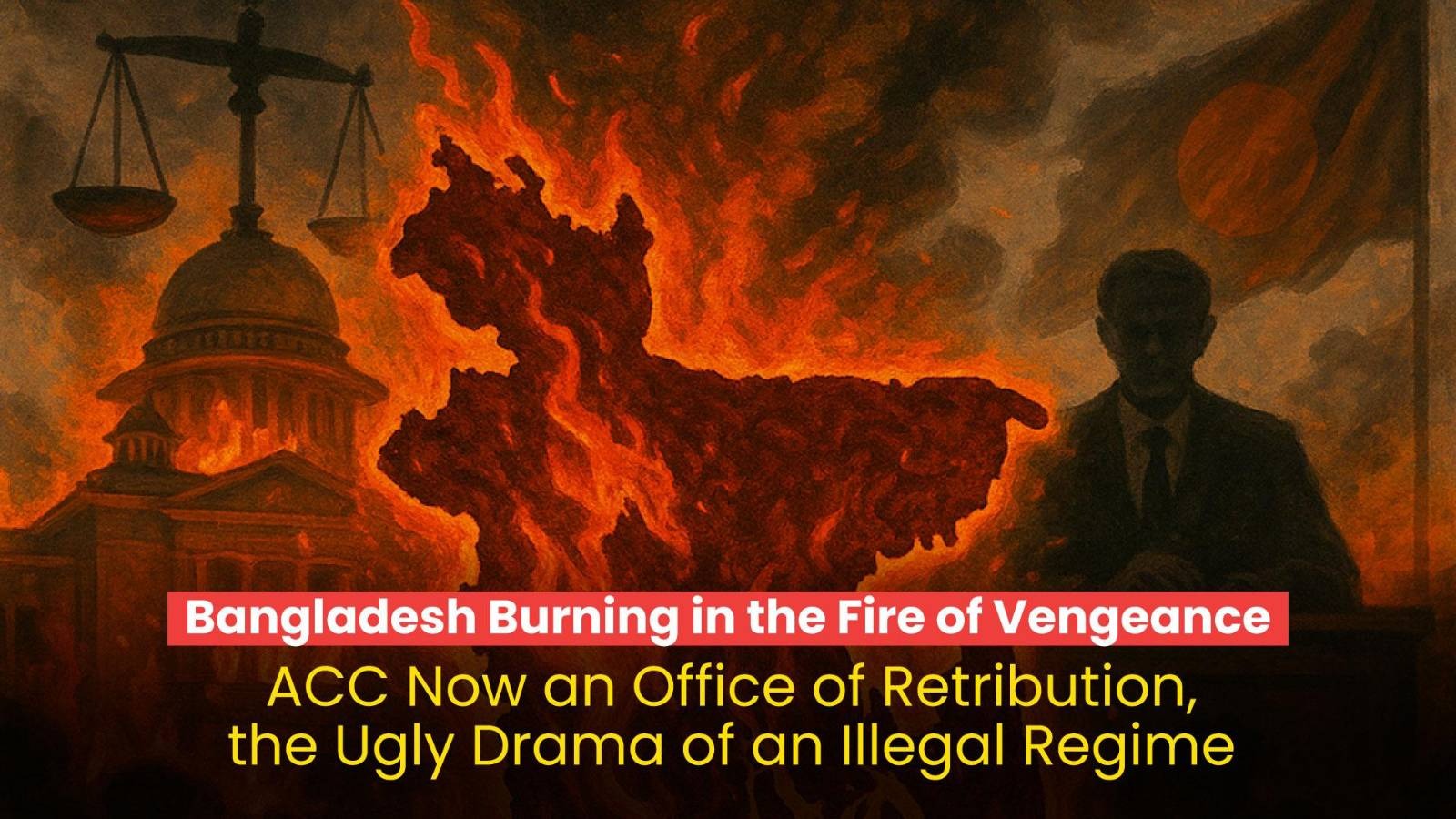41049
Published on June 6, 2024The six point movement was a movement in the then East Pakistan, spearheaded by Sheikh Mujibur Rahman, which called for greater autonomy for the eastern part of Pakistan. The six-point movement is a milestone in the history of our struggle for independence. The six point declaration has been widely credited as the "charter of freedom" in Bangladesh's struggle for self-determination from Pakistan's domination. It was the turning point in Bangladesh's quest for independence.
Opposition leaders in West Pakistan called for a national conference on February 6, 1966 to assess the trend of post-Taskent politics. On February 4, Sheikh Mujibur Rahman, along with some members of Awami League, reached Lahore to attend the conference. The next day on February 5, he placed six points before the meeting of subject committee and urged to include the issue in the agenda of next day conference. The proposal was rejected and Sheikh Mujibur Rahman was identified as separatist. On February 6, Bangabandhu boycotted the conference. On February 21, six points proposal was placed before the meeting of the working committee of Awami League and the proposal was accepted unanimously.
The reason for proposing six points was to end Master-slave rule in Pakistan. Following the partition of India, the new state of Pakistan came into being. The inhabitants of East Pakistan (later Bangladesh) made up the majority of its population, and exports from East Pakistan (such as jute) were a majority of Pakistan's export income. However, East Pakistanis did not feel they had a proportional share of political power and economic benefits within Pakistan. A statistical overview of economic discrimination is shown in this table:
|
Year |
Amount spent on West as percentage of total |
Spending on East Pakistan (in crore rupees) |
Amount spent on East as percentage of total |
|
|
% of total population |
36.23 |
63.77 |
||
|
1950–55 |
1,129 |
68.31 |
524 |
31.69 |
|
1955–60 |
1,655 |
75.95 |
524 |
24.05 |
|
1960–65 |
3,355 |
70.5 |
1,404 |
29.5 |
|
1965–70 |
5,195 |
70.82 |
2,141 |
29.18 |
|
Total |
11,334 |
71.16 |
4,593 |
28.84 |
|
Source: Reports of the Advisory Panels for the Fourth Five Year Plan 1970–75, Vol. I, published by the planning commission of Pakistan (quick reference: crore = 107, or 10 million) |
||||
East Pakistan was facing a critical situation after being subjected to continuous discrimination on a regional basis, year after year. As a result, the economists, intelligentsia, and the politicians of East Pakistan started to raise questions about this discrimination, giving rise to the historic six-point movement.
The six points are:
The mainstream political leaders of the opposition parties in Pakistan were not even willing to discuss the merits or demerits of the proposed six-point formula for ensuring greater provincial autonomy for the eastern province of Pakistan. In fact, no West Pakistani political leader (not even Nawabzada Nasarullah Khan, the President of the then All-Pakistan Awami League) was willing to lend any support to Sheikh Mujibur Rahman's demand for maximum provincial autonomy based on the proposed six-point formula.
Instead of endorsing or discussing the six-point formula, the self-declared champions of restoration of democracy in the then Pakistan had deliberately launched a vile propaganda campaign against Sheikh Mujibur Rahman, the chief sponsor and proponent of the six-point plan. Doubtless, the motivated propaganda was essentially characterised by blatant falsehoods, conjectures, distortions, and innuendoes. In fact, the six-point proposal received frontal attack even from the veteran Pakistani political stalwarts of most of the political parties at a time when they were clamouring for establishing pure democracy in Pakistan.
The six-point formula also shook the foundation of the Islamic Republic of Pakistan. The six-point plan had exposed the fact that the real intention of Pakistan's ruling elite was to "strengthen" the central government, but not Pakistan. Sheikh Mujib repeatedly said in several public meetings that the people of Pakistan had always desired to have a "strong Pakistan," not a "strong central government."
However, the ruling sect of Pakistan was not at all interested in dealing or negotiating with the Awami League on the issue of provincial autonomy even though Sheikh Mujibur Rahman had publicly stated that he was willing to negotiate his six-point plan with anyone in good faith, provided a meaningful autonomy was ensured for East Pakistan. The autocratic rulers of Pakistan started using repressive tactics to suppress the six-point movement.
Ayub Khan claimed that Six Point Plan would create a sovereign Bengal which will put bengali Muslims under the domination of 'Caste Hindus' in West Bengal. Comparing the situation of Pakistan with the US before the Civil Wars in 1860s, he called Sheikh Mujib as secessionist and destructionist. The self proclaimed President of Pakistan warned Sheikh Mujib of 'dire consequences' if failed to shun the idea of provincial autonomy. Ayub Khan had also the audacity to threaten that the "language of weapons" would be ruthlessly employed for exterminating the "secessionist elements from Pakistan."
Monem Khan, the infamous governor of East Pakistan, had publicly stated that "as long as I remain as the governor of this province, I will see to it that Sheikh Mujibur Rahman remains in chains."
A fearless Sheikh Mujibur Rahman was quick to respond to such false accusations and vile threats. In a mammoth public gathering at Paltan Maidan, he thundered: "No amount of naked threats can distract the deprived Bangalees from their demand for provincial autonomy based on their six-point plan." Sheikh Mujibur Rahman, the greatest champion of Bangalees' rights for self-determination, along with top leaders of the Awami League, kept on addressing numerous public meetings in the nooks and corners of the then East Pakistan. The entire Awami League and the East Pakistan Students' League (EPSL), its student front, were geared toward mobilising and motivating the general masses in favour of self-government and autonomy.
Sheikh Mujibur Rahman had not only presented the bold proposal for "maximum autonomy" but also launched a mass movement (which he himself led till he was put in jail on May 9, 1966) for mobilising mass support for the six-point program. He invested all of his energies and resources in disseminating the fundamental message, and articulating both the rationale and the justification of "maximum autonomy" for East Pakistan.
However, before launching a full-fledged mass movement for realising his six-points, Sheikh Mujib had initiated some strategic intra-party measures. For example, the working committee of the party was restructured and revamped in the historic Council Session of the East Pakistan Awami League (EPAL), that was held on March 18-20, 1966. While Sheikh Mujibur Rahman and Tajuddin Ahmed were unanimously elected the president and general secretary, respectively, of the newly revamped Awami League, the proposed six-point program was also fully endorsed by the council session.
To the disappointment of Pakistan's ruling sect, the six-point formula generated a great deal of enthusiasm among the people of the then East Pakistan. Indeed, the six-point movement had instantly garnered spontaneous mass support throughout East Pakistan. The entire nation was galvanised throughout February-March-April-May-June, 1966. As noted by Dr. Talukder Maniruzzaman: "To say that this (six-point) program evoked tremendous enthusiasm among the people of East Bengal would be an understatement. Encouraged by overwhelming popular support, Sheikh Mujib convened a meeting of the AL Council (March 18-20, 1966) in which his program was unanimously approved and he was elected president of the (Awami League) party. With a phalanx of organisers from the Student's League, Sheikh Mujib then launched a vigorous campaign. For about three months (from mid-February to mid-May), the urban centers of East Bengal seemed to be in the grip of a 'mass revolution,' prompting the central government to arrest Sheikh Mujib and his chief lieutenants (Tajuddin Ahmed, Mansoor Ali, Zahur Ahmed Chowdhury, and others) under the (infamous) Defense of Pakistan Rules, and put down a complete general strike in Dacca (June 7, 1966) by killing 13 participating strikers (Talukder Maniruzzaman, The Bangladesh Revolution and Its Aftermath, UPL, 1988. P. 25)."
Instead of dealing fairly with the legitimate grievances of the neglected eastern province of Pakistan, the power elite of Pakistan took a deliberate decision to suppress the Bangalees' quest for maximum provincial autonomy through the use of colonial types of repressive methods and procedures. Obviously, Sheikh Mujibur Rahman became the main target of various virulent forms of harassment, intimidation and fraudulent cases. The government intensified its policy of repression and persecution against him and his followers. For example, while Sheikh Mujibur Rahman was touring various districts in April 1966, he was repeatedly arrested in almost all important places on flimsy and fraudulent charges.
Dr. Anisuzzaman, a distinguished literary figure of Bangladesh, has summarised the nature of the repressive measures which Sheikh Mujibur Rahman had to confront and endure for starting and sustaining the historic six-point movement at a critical juncture of our history: "During that period (from the middle of February through May 9, 1966), there was hardly any place where Sheikh Mujib was not arrested (on false charges) for addressing public meetings to enlist mass support in favour of the six-point program. Today in Jessore, tomorrow in Khulna, day after tomorrow in Rajshahi, and on the following days in Sylhet, Mymensingh, and Chittagong. Once he was released on bail in one place, he rushed to another place. He had no time to waste. The only time wasted was in the process of posting bail for his release. Arrested again, and being released on bail once again, and then immediately move to another place to address the public meetings (Anisuzzaman, Bangabandhu in the Context of History, in Mreetoonjoyee Mujib--Immortal Mujib, Dhaka; Bangabandhu Parishad, 1995, pp.11-12)." The Daily Ittefaq, the most popular Bangla newspaper of the then eastern province of Pakistan, was shut down, its press was confiscated, and its editor, Tofazzal Hossain (Manik Mia), was put in jail. Yet, the repressive police forces could not halt the march of the six-point movement.
In his seminal assessment of the role of the Awami League in the political development of Pakistan, Dr. M. Rashiduzzaman summarised the significance of the six-point program: "The culmination of the Awami League demand for regional autonomy came in March 1966 when Sheikh Mujibur Rahman put forward his Six-Point Program. …… The impact of the six-point demand of the Awami League was felt far and wide. The central government (of Pakistan) dubbed it as a demand for the separation of the Eastern wing from the rest of the country, and launched a propaganda campaign which called for a strong central government and decried the autonomists. On June 7, 1966, there was a province-wide hartal (strike) in East Pakistan sponsored by the Awami League to press the demands embodied in the six-point program. Sheikh Mujibur Rahman, along with several lieutenants, was again put into prison. (Sheikh Mujib was put in jail in early May, 1966). The government also blamed 'foreign interests' in the agitation led by the six-pointers -- After about a year, several East Pakistani civil servants and military officers were arrested on the charge that they had conspired to separate the East wing by violent means in collusion with India. Eventually, the so-called 'Agartala Conspiracy case' was initiated against Sheikh Mujibur Rahman and 31 others for alleged high treason (M. Rashiduzzaman,The Awami League in the Political Development of Pakistan, Asian Survey, Vol. 10, No. 7, July, 1970; pp. 574-587)."














